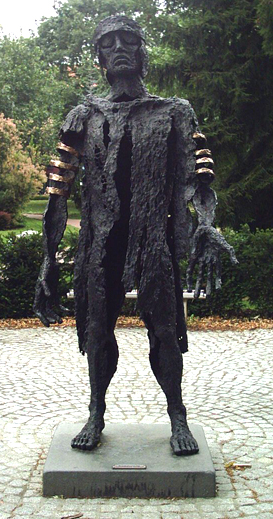
|

By 51 BCE Gaul had been conquered by the Romans, its people assimilated and their resources carted off to Rome. The Germans serving as
auxiliaries in the Roman military campaigned against Gaul during the war and were stationed there after the region became a province of Rome. Having witnessed
the brutality of the Romans toward the Gaulish people and the loss of life and property, many of the Germanic people felt they did not want the same fate to fall
upon them.
|
In 7 CE Publius Quinctilius Varus was appointed as an administrative official to make Germania the newest of Rome's provinces in Europe. At first it seemed
as if Rome was taking a different approach with integrating Germania into provincehood, but soon this illusion was shattered as Varus's demands upon Germania and its tribes
became more and more unreasonable. The final issues came with the high taxation Varus implemented in Germania and the militarization of the Rhine. Both of these actions sowed
the seeds of discontent among the Germanic tribes, and the noble families of the Cherusci, Marsi, Chatti, Bructeri, Chauci and Sicambri discussed ways in which to deal with the
Roman infringement upon Germania. The Cherusci, one of the biggest tribes, felt rebellion was needed; however, not all of the Cheruscan nobles agreed. Segestes, one Cheruscan noble,
felt it was best to embrace Rome rather than oppose it. Making the issue more complicated was the grudge Segestes held against Arminius, a prince of
the Cherusci and current commander of the Cherusci detachment of Roman auxiliary forces, for marrying his daughter Thusnelda against his will. Although not specifically
mentioned as being part of the tribes conspiring against Rome, the Harii are also believed to have participated in the attack by the Germanic
alliance of tribes in 9 CE. | | 
The 2.3 meter high sculpture depicts
the defeated general Publius Quintilius Varus during the Battle of the Teutoburg Forest. It portrays the state of internal destruction of the betrayed and discouraged
leader who was destroyed with his troops in 9 CE., created by Wilfried Koch. Picture by Stefan Flöper, Wikimedia Commons |
The alliance of Germanic tribes came to an agreement that action had to be taken against the Roman desires to dominate Germania. It is not
clear when the initial meetings took place and when the plans were begun, but it would have taken a considerable amount of time to build the earthen fortification found
at Teutoburg Forest and then camouflage it to appear to blend into the natural surroundings. It is not hard to believe that the plan to deal with Varus began
in 7 CE after his appointment to Gaul and attempts to prepare Germania for provincehood. Also, Arminius had returned from campaigns in the Pannonian wars to his
tribe in 7 CE. With 2 years to build the fortifications and prepare for war, this could have easily been done by the Germanic tribe coalition, as many had served or were
serving as auxiliaries for Rome. This would also allow the necessary time for the ambush site to return to a natural, seemingly undisturbed state so that the fortifications
would go unnoticed by the unsuspecting Roman legions.
At the end of the summer campaign of 9 CE, Varus headed out with his men to the winter fortification at Xanten. On the trip Arminius told Varus that a small
Germanic tribe had revolted against Rome's plan to make Germania a province. Varus trusted Arminius and believed Arminius to believe in Rome and the Roman
way of life, despite having been warned by Segestes that Arminius would betray Rome and Varus. Since it was on the way to Xanten, Varus decided to detour and
deal with the rebellion before it had a chance to grow and spread to other tribes. Arminius suggests to Varus that he go ahead of the main column and call his men to
arms to aid Rome. Varus agreed that it would be good to have additional forces and allowed Arminius to leave. At this point the trap had been set for Varus and
his legions.
The map below shows the locations of the Germanic tribes and the Roman fortifications along the Rhine:

Map created by Andrei nacu, Wikimedia Commons
|
